Sanwa KS3 Handleiding
Bekijk gratis de handleiding van Sanwa KS3 (2 pagina’s), behorend tot de categorie Detector. Deze gids werd als nuttig beoordeeld door 60 mensen en kreeg gemiddeld 4.7 sterren uit 30.5 reviews. Heb je een vraag over Sanwa KS3 of wil je andere gebruikers van dit product iets vragen? Stel een vraag
Pagina 1/2

[4] DESCRIPTION OF FUNCTIONS
4-1 Power switch
Switches the power on and off. After measurement, be sure to set this switch to
OFF to prevent wasteful battery consumption.
Note: This instrument does not have the auto power-off
4-2 Open phase indicators
In the three-phase power line check, each indicator lights up when the
corresponding line is live. An extinguished indicator means that the phase of
the line is open.
Note: Each LED indicator lights at an input of about 30 V or more. These
indicators do not light during the motor rotation check because the input
voltages are less than 30 V.
4-3 Input jacks
Insert the measurement cords into the jacks of the same colors.
4-4 CW indicator (Clockwise = positive phase)
Lights (in green) when the phase is positive.
4-5 CCW indicator (Counterclockwise = negative phase)
Lights (in red) when the phase is negative.
4-6 Power ON indicator (Low battery warning)
Lights when the power is on.
It stops lighting when voltage of the built-in battery drops to 6.0 V or less. Replace
the battery with a new one as soon as possible if the indicator will not light.
5-1 Pre-operational Check
Perform pre-operational check for safety.
• Check the external appearance. Check that there is no abnormality with the
main unit and measurement clips. Check that there is no abnormality with the
cord such as disconnection or cracking.
• Check the lighting of the open phase indicators and the functioning of the
phase detection by clipping cables with known voltages and phases.
If one or more indicator(s) do not light, the measurement cord(s) may be
disconnected or the built-in fuse may be blown.
Note: For the fuse replacement, please contact us (see section 7-2).
• If the Power ON indicator will not light, replace the battery with a new one.
• Make sure your hands and the measurement clips are not wet.
6-1 Maintenance and Inspection
Before use, check the instrument as specified (see section 5-1) to confirm that
there is no abnormality. If anything is abnormal, do not use the instrument and
return it to your authorized Sanwa agent or distributor for repair.
6-2 Repair
For details, please contact your authorized Sanwa agent or distributor.
6-3 Storage
6-4 Battery Replacement
● The battery loaded at the factory is a monitor battery, so their service life may
be shorter than that of a brand-new battery. A monitor battery is a type of
battery used to check the functions and performance of a product.
①Remove the fixing screw (x 1) from the
battery compartment cover.
②Slide the battery compartment cover
downward to remove it.
③Replace the battery with new ones.
④Place the battery compartment cover and
tighten the fixing screw.
5-2 Checking the three-phase power lines
(1) Insert the three measurement cords into the input jacks.
(2) Set the Power switch to ON.
(3) Connect the three measurement clips to R-S-T of the three-phase AC power
supply as shown below (correct measurement is impossible if only two of
them are connected)/
Connect the red measurement clip to R, the white measurement clip to S and
the blue measurement clip to T.
[5] MEASUREMENT PROCEDURES
[6] MAINTENANCE
1.
Do not perform measurement of a voltage exceeding the maximum rated voltage.
2. During measurement, do not hold the measurement clip at any point
beyond the barrier.
• To avoid electric shock when replacing the batteries, first disconnect the
measurement clips from the object to be measured, and turn off the power.
• The section is very important for safety. Read and understand the
following instructions fully and maintain your instrument properly.
1. The panel and case are not resistant to volatile solvent and must not be
cleaned with thinner or alcohol.
2. The panel and case are not resistant to heat. Do not place the instrument
near heat-generating devices (such as a soldering iron).
3.
Do not store the instrument anywhere it may be subject to vibrations or could fall.
4. When storing the instrument, avoid hot, cold or humid locations, locations
exposed to direct sunlight, or locations where condensation is anticipated.
5. When the instrument is not going to be used for an extended time, be
sure to remove the batteries.
[1] SAFETY PRECAUTIONS
Before use, read the following safety precautions.
This instruction manual explains how to safely use your new KS3 motor rotation
tester & 3phase detector. Before use, please read this manual thoroughly. After
reading it, keep it together with the product so you can refer to it when necessary.
If this product is not used as specified in this manual, its protection function may
be compromised.
To avoid accidental burns or electric shock, always follow any instructions with
“ WARNING” or “ CAUTION” headings.
1-1 Explanation of Warning Symbols
The meanings of the symbols used in this manual and on the products are
explained below.
: Very important instructions for safe use.
Warning messages are intended to prevent accidents to operating
personnel such as burn and electric shock.
Caution messages are intended to prevent damage to the instrument.
: Symbol requesting warning or reference to the instruction manual.
: Symbol requesting caution or risk of electric shock.
: Double insulation or reinforced insulation
CW: Stands for clockwise (positive phase).
CCW: Stands for counterclockwise (negative phase).
1-2 Warning Instructions for Safe Use
To avoid physical injury such as burns or electric shock, be sure to observe the
following instructions when using this instrument.
1. Pay special attention when measuring voltages of AC 33 Vrms (46.7 V
peak) or DC 70 V or more to avoid injury.
2. Never use the instrument on lines that exceed 500 V to avoid the risk of
electric shock.
3. Do not use the instrument if the main unit, measurement clip, or
measurement cord is damaged or broken.
4. Do not use the instrument with the battery compartment cover removed.
5.
Do not attempt to repair or modify the instrument except to replace the battery.
6.
Be sure to check the instrument before each use and inspect it at least once a year.
7. To avoid compromising the protection function of this instrument, do not
use it in any way other than instructed in this manual.
WARNING
WARNING
WARNING
WARNING
CAUTION
Measurement category (overvoltage category)
Equipment of CAT I:
Secondary cable runs from a power supply transformer connected to a wall socket.
Equipment of CAT II:
Primary cable runs of power-consuming equipments from a wall socket.
Equipment of CAT III:
Primary cable runs of equipments directly connected to a distribution board and
cable runs from a distribution board to wall sockets.
Equipment of CAT IV:
Cable runs from an incoming line to a distribution board.
[2] APPLICATION AND FEATURES
2-1 Application
This instrument is a motor rotation tester & 3phase detector that allows you to
determine the rotation direction of a three-phase motor by turning the motor
shaft manually, as well as to check the phase sequence (positive, negative)
and open phase condition of three-phase lines.
2-2 Features
• Safety design that complies with IEC61010-1 CAT. III 500 V.
• Motor rotation direction testable before connection of the power supply.
• Phase sequence and open phase checking of three-phase lines.
• Bright LED indicators.
• Magnets on the back of the main unit allow it to be fixed on a distribution board
and other metallic objects.
[3] NAMES OF PARTS
Main Unit
[7] AFTER-SALE SERVICE
7-1 Warranty and Provision
Sanwa offers comprehensive warranty services to its end-users and to its
product resellers. Under Sanwa’s general warranty policy, each instrument is
warranted to be free from defects in workmanship or material under normal use
for the period of one (1) year from the date of purchase.
This warranty policy is valid within the country of purchase only, and applied
only to the product purchased from Sanwa authorized agent or distributor.
Sanwa reserves the right to inspect all warranty claims to determine the extent
to which the warranty policy shall apply.
This warranty shall not apply to the battery, measurement cable and
measurement clips provided with the product, which have been subject to one
of the following causes:
1.
A failure due to improper handling or use that deviates from the instruction manual.
2. A failure due to inadequate repair or modification by people other than Sanwa
service personnel.
3. A failure due to causes not attributable to this product such as fire, flood and
other natural disaster.
4. Non-operation due to a discharged battery.
5.
A failure or damage due to transportation, relocation or dropping after the purchase.
7-2 Repair
Customers are asked to provide the following information when requesting
services:
1. Customer name, address, and contact information
2. Description of problem
3. Description of product configuration
4. Model Number
5. Product Serial Number
6. Proof of Date-of-Purchase
7. Where you purchased the product
Please contact Sanwa authorized agent / distributor / service provider, listed in
our website, in your country with above information. An instrument sent to Sanwa
/ agent / distributor without those information will be returned to the customer.
Note:
1) Prior to requesting repair, please check the following:
• Capacity and installation polarity of the built-in batteries.
• Continuity of the test leads.
2) Repair during the warranty period:
The failed instrument will be repaired in accordance with the conditions
stipulated in “7-1 Warranty and Provision”.
3)
Repair after the warranty period has expired:
In some cases, repair and transportation cost may become higher than the
price of the product. Please contact Sanwa authorized agent / service
provider in advance. The minimum retention period of service functional
parts is 6 years after the discontinuation of manufacture. This retention
period is the repair warranty period. Please note, however, if such functional
parts become unavailable for reasons of discontinuation of manufacture,
etc., the retention period may become shorter accordingly.
4) Precautions when sending the product to be repaired
To ensure the safety of the product during transportation, place the product
in a box that is larger than the product 5 times or more in volume and fill
cushion materials fully and then clearly mark “Repair Product Enclosed” on
the box surface. The cost of sending and returning the product shall be
borne by the customer.
7-3 SANWA Website
http://www.sanwa-meter.co.jp
E-mail: exp_sales@sanwa-meter.co.jp
[8] SPECIFICATIONS
Operating voltage range Three-phase, line voltage 75 to 500 V AC (sine wave,
continuous).
Overload protection input 600 V
Fuse rating
φ
5 x 20 mm, 0.5 A/500 V Breaking capacity 50 kA
Power frequency range 40 to 400 Hz.
Motor rotation direction Determined at rotation speeds from 2 Hz (2 rotations/
sec.) to 400 Hz.
Operation environment Altitude 2000 m or less, indoor use, environmental
pollution degree II.
Operating temperature/ humidity
ranges 0 to 40 °C, 80 % RH or less (without condensation).
Storage temperature/ humidity
ranges
-10 to 50 °C, 80 % RH or less (without condensation).
Power supply Alkaline 9 V battery 6LR61 (6LF22, 1604 A) ×1
Power consumption Approx. 5 mA (standby state), approx. 10 mA (MAX)
Low battery indication Power ON indicator stops lighting at approx. 6.0 V or
less.
Continuous operation duration Approx. 60 hours
Dimensions and mass 128 ( ) x 72 ( ) x 38 ( ) mm, approx. 210 g H W D
(including battery).
Safety standards IEC61010-1, CAT. III 500 V, IEC61557-1,7,
IEC61010-2-030, IEC61010-031.
EMC directive, RoHS directive IEC61326-1 (EMC). EN50581 (RoHS).
Accessories Measurement clips (CL-KS), measurement cords
(TL-KS), instruction manual, carrying pouch (C-KS2).
Specifications and external appearance of the product described above may
be revised or modified without prior notice.
L2 L3
L1
CCW
nagative-phase
indicator
Input jacks
Open phase indicators
CW positive-phase
indicator
Power On LED
Power switch
Barrier
Measurement cord (TL-KS)
Overall length approx. 0.7 m (CAT III 500 V)
Measurement Clip (CL-KS)
1. The open phase indicators do not light if any of the line voltages is less
than 30 V.
2. The CW or CCW indicator lights up even when there is an open phase,
but the operation is not guaranteed. Be always sure to check the phase
sequence while all of the open phase indicators are ON.
3. This instrument cannot be used with three single-phase lines.
CAUTION
L2 L3
L1
L2 L3
L1
Note: Illustrations of ON/OFF status of the indicators in this manual
LED ON indication LED OFF indication
(4) Check the open phase.
In the example above, the indicators of the R- and S-phases are ON and the
indicator of the T-phase is OFF, which means that the phase of T is an open phase.
* The CW or CCW indicator lights up even when there is an open phase, but
the operation is not guaranteed. Be always sure to check the phase
sequence while all of the open phase indicators are ON.
(5)
Check whether the phase is positive or
negative.
When the phase is positive (clockwise),
the CW indicator lights green. When the
phase is negative (counterclockwise),
the CCW indicator lights red.
The example above shows the status
in which the phase of R, S and T is positive.
5-3 Checking the motor rotation direction
(1) Insert the three measurement cords into the input jacks.
(2) Set the Power switch to ON.
(3) Connect the three measurement clips to L1-L2-L3 of the motor as shown
below (correct measurement is impossible if only two of them are connected).
(4) Turn the motor shaft at a speed higher than the specified rotation speed.
When the phase is positive (clockwise), the CW indicator lights green. When
the phase is negative (counterclockwise), the CCW indicator lights red.
* The specified rotation speed refers to 2 rotations or more per sec. This
figure is variable depending on the number of motor poles.
* If there is an open phase, turning the motor shaft in either direction lights
either or none of the CW and CCW indicators. Be sure to check by turning it
in both directions.
*
Certain motors may rotate in the opposite direction when they are connected in
the correct sequence. Please check the specifications document of your motor.
1. Before measurement, make sure that no voltage is applied to the motor.
2. If an open phase is detected in the motor rotation direction check, turning
the motor shaft in either direction lights either or none of the CW and
CCW indicators. Be sure to check by turning it in both directions.
3. Correct judgment is impossible if the turning speed is low. Be sure to
check by turning the motor shaft at a certain speed (the specified rotation
speed cannot be reached if it is half stopped or turned at a low speed).
CAUTION
L1 L2 L3
L2 L3
L1
Motor
− 3 − − 4 −− 2 −− 1 −
Product specificaties
| Merk: | Sanwa |
| Categorie: | Detector |
| Model: | KS3 |
Heb je hulp nodig?
Als je hulp nodig hebt met Sanwa KS3 stel dan hieronder een vraag en andere gebruikers zullen je antwoorden
Handleiding Detector Sanwa

27 December 2023

27 December 2023

27 December 2023
Handleiding Detector
- Garrett
- Chauvin Arnoux
- EVOLVEO
- BRK
- NEO Tools
- Grothe
- X4-Tech
- S.E. International
- Inovonics
- Pioneer
- Topex
- Seaward
- Royal Sovereign
- FireAngel
- Nedis
Nieuwste handleidingen voor Detector
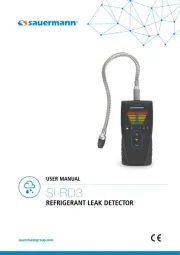
1 September 2025

20 Augustus 2025
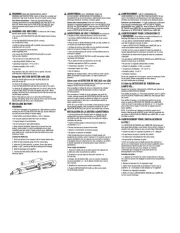
18 Augustus 2025
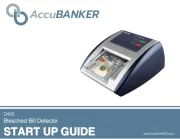
12 Augustus 2025
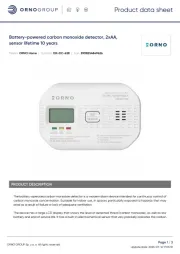
11 Augustus 2025
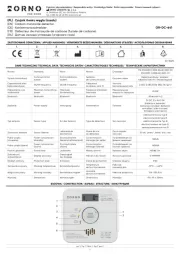
11 Augustus 2025
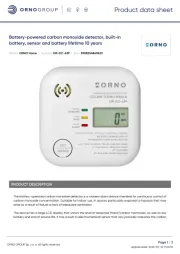
11 Augustus 2025
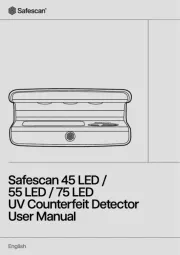
8 Augustus 2025
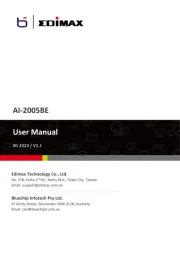
28 Juli 2025
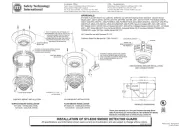
24 Juli 2025